Taking a fortnight-long Sumatra backpacking trip was one of my best travel decisions to date.
Despite being the largest island in Indonesia, Sumatra is very much off the typical tourist map in Southeast Asia.
However, in Sumatra, you have the chance to see orangutans and other endemic monkeys, trek volcanoes, taste the famous Sumatran coffee and visit the world’s largest crater lake.
It’s also easy to have authentic cultural experiences, such as living with the Mentawai tribe on the remote Mentawai Islands, shopping at a busy market or cooking Sumatran cuisine at a homestay.
There is no standard backpacking route in Sumatra… yet. Therefore, visiting Sumatra can sound daunting.
That’s why I have created the following blog post, to help you put together your Sumatra itinerary. Before I visited the island, I struggled to find an in-depth Sumatra blog, especially one with a north Sumatra itinerary and a west Sumatra itinerary.
Looking for more tips? I also have a guide to what to wear in Sumatra (along with a free packing list) and 12+ blog posts on Sumatra for you to browse.
Disclosure: This post includes affiliate links. If you decide to click through and make a qualifying purchase, I will receive a small commission at no extra cost to you – thanks for your support.
QUICK INFORMATION
Best time to visit: April to May
Where to start your trip: Medan (north) or Padang (west)
Flying to Sumatra? Check Skyscanner for deals ✈️
Don’t miss these experiences…
1. Overnight orangutan trekking (from Bukit Lawang or Medan) – likely to sell out!
2. Hike Mount Sibayak at sunrise (from Berastagi or Medan) 🌋
3. The famous five-day Mentawai tribe tour
Where is Sumatra?
Sumatra is in Indonesia, an archipelago in Southeast Asia with over 17,500 islands and islets.
It is adjacent (just south) to Peninsular Malaysia and northwest of the Indonesian island of Java.
Further southeast, at the southern end of Java, is Bali.
Why is Sumatra Famous?
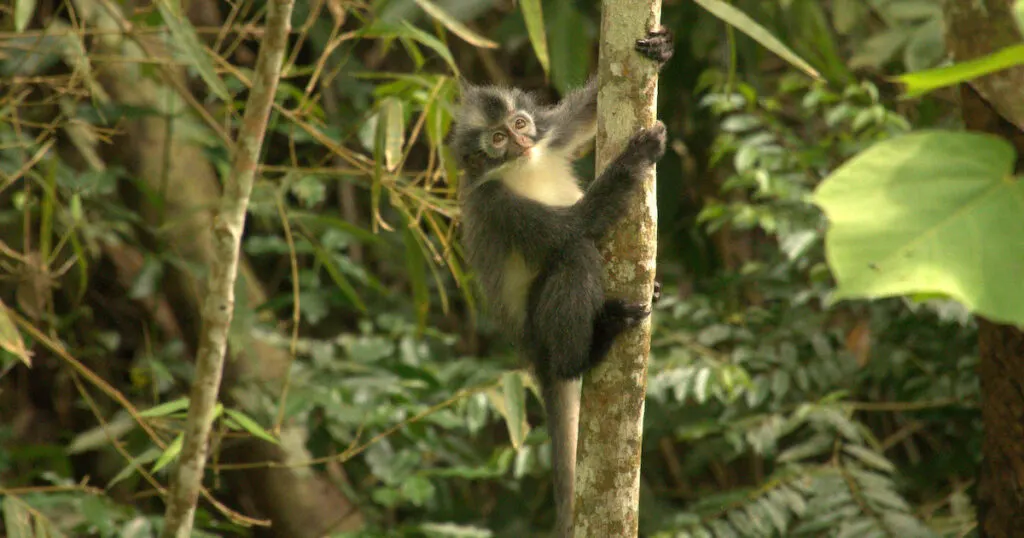
- Sumatra is one of only two islands in the world with orangutans (the other is Borneo).
- It has the world’s largest crater lake, Lake Toba.
- It is the sixth-largest island in the world.
- It has some of the most important rainforests in the world, with wildlife such as Sumatran tigers, rhinos, elephants, gibbons and sun bears. Many of the species are native to the island.
- Sumatra is an offbeat travel destination in Indonesia: you don’t need to compete with crowds and you can experience more authentic interactions with locals.
- It is the third-largest coffee producer in the world. You must try Sumatran coffee.
- There are 10 national parks in Sumatra.
- Sumatra features distinct traditional houses called Rumah Gadan, which feature gabled concave roofs inspired by the shape of buffalo horns.
- Sumatra is located on the Ring of Fire. Therefore, it is famous for having 68 volcanoes and having experienced past eruptions and other natural disasters.
Is it Worth Visiting or Backpacking Sumatra?
A few islands in Indonesia take the brunt of its tourism: Bali (the front-runner) and Lombok, Java, and Komodo (three spots that are quickly growing in popularity).
Sumatra is off the beaten backpacking route, and that’s exactly why I adore it.
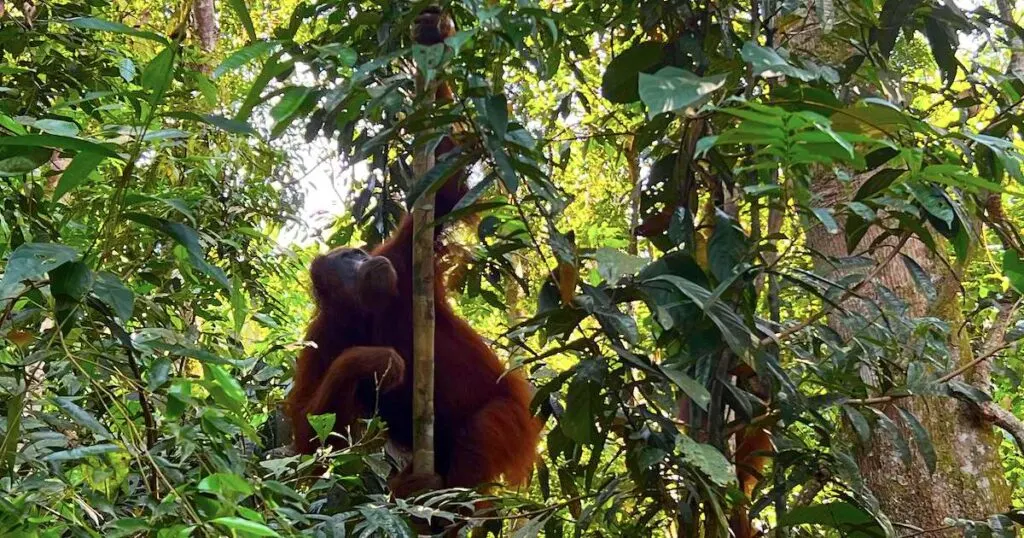
The tourist attractions in Sumatra – if you can even call them that – are not at all saturated.
It’s the first place where I felt like I could get a real sense for the culture and everyday life in Indonesia.
Then, you have Sumatra’s landscapes: it is home to the largest volcanic crater lake in the world, Lake Toba, and multiple volcanoes, including ones that you can hike safely.
There are remote islands with world-renowned waves. There are also mountain ranges, lakes, valleys, canyons, and fishing towns.
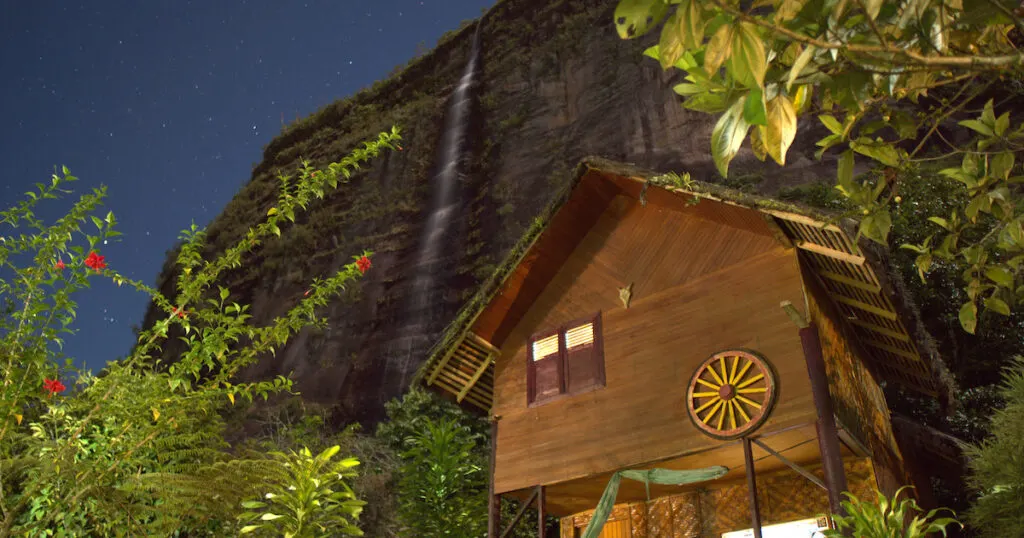
Abdi Homestay in Harau Valley
Seeing orangutans in Sumatra was one of the biggest highlights of my travels in Southeast Asia.
Nothing can compare to watching the 191-pound creatures climb between the vines and trees.
Even if you have already seen the orangutans in Borneo, Sumatra is still worth visiting.
The orangutans in Sumatra are slightly lighter in colour and they typically have longer fur and narrower faces than their Malaysian relatives.
Let’s be clear though: Sumatra is not a party backpacking destination. As a predominantly Muslim island, there are no bars or clubs.
Hostels are not really a thing in Sumatra yet, either.
Most of the people travelling to Sumatra are couples, solo travellers, and small friend groups.
You’re likely to meet very few people on your travels, and if you do, it’ll probably happen in the popular homestays in north Sumatra.
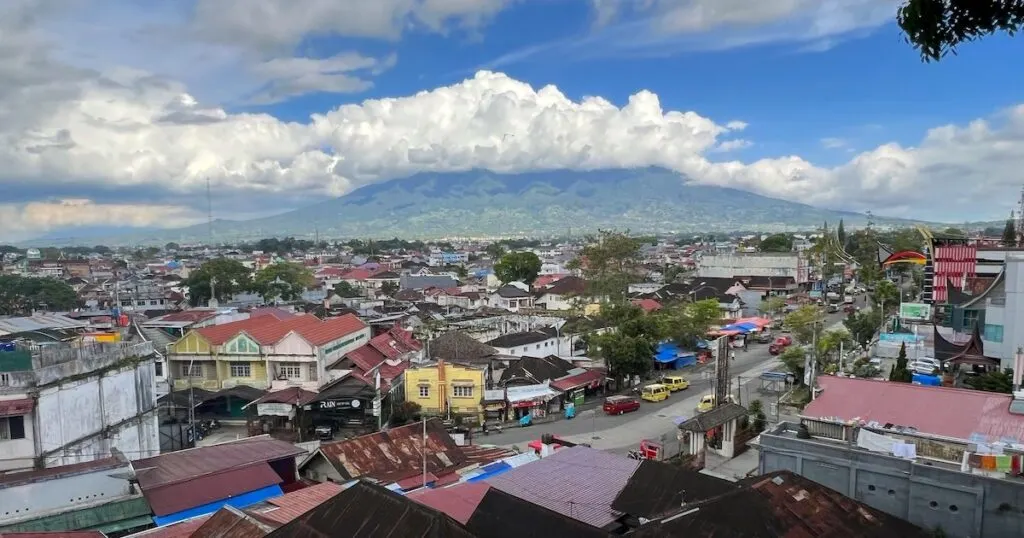
Okay, but what about the risk of natural disasters?
Many people avoid visiting Sumatra because of its headlines: earthquakes, tsunamis, and flash flooding.
True, Sumatra is prone to natural disasters. However, as long as you’re informed about what to do during a tsunami or earthquake, I don’t think you should be put off visiting Sumatra.
Earthquakes and tsunamis can happen in many popular destinations in Southeast Asia (including Thailand) – so why should you skip this particular spot?
Which Are the Best Months to Visit Sumatra?
The best months to visit Sumatra are April and May.
These months fall within Sumatra’s dry season, when the weather is hot, humid, and approximately 32 °C (90 °F) most days.
They also fall outside of Sumatra’s burning season, which is between June and October.
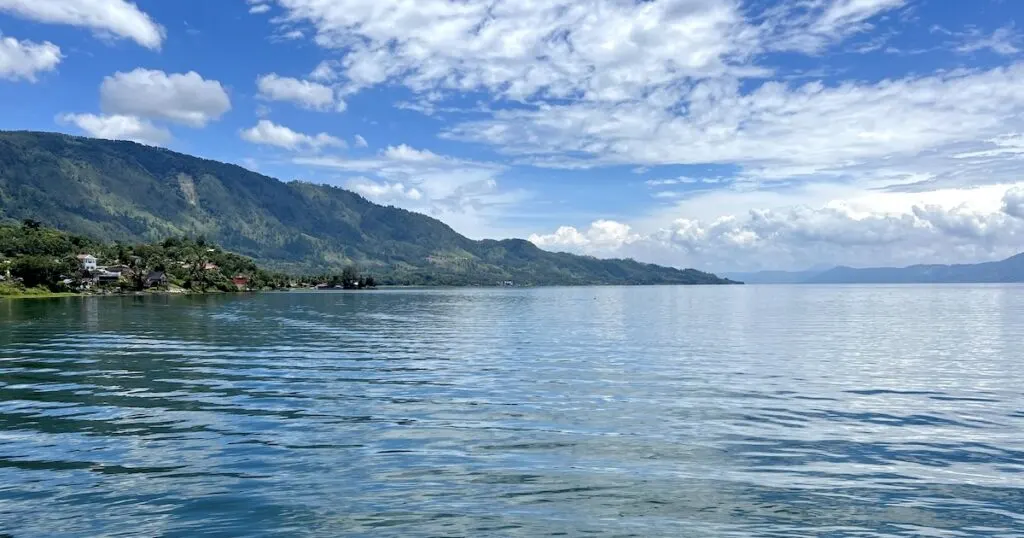
Should you visit Sumatra during Ramadan?
You might want to avoid visiting Sumatra during Ramadan (a month of fasting for those of the Muslim faith).
During Ramadan, many of the restaurants are closed during daylight hours.
While most homestays will provide you with basic Indonesian meals during Ramadan, I found it very difficult to find a place to eat during the day.
Finding food was easier at Lake Toba, which is predominantly Christian.
In 2025, Ramadan is expected to start on Friday 28th February (or a day later), so it will take place throughout March 2025.
When is burning season in Sumatra?
You should also avoid visiting Sumatra during the burning season.
Farmers use slash-and-burn methods to dispose of old crops, which causes smoke to descend over Sumatra.
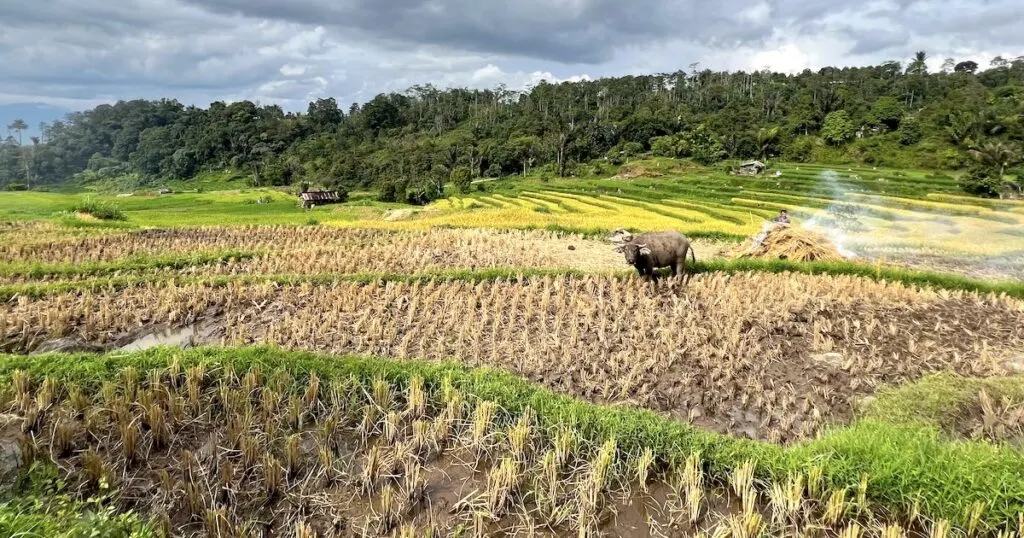
This intense haze forms during the burning season in Sumatra between June and October. The worst period is from July to September.
The air quality in Sumatra decreases during this time. Many of the good views are also covered.
What’s the weather like in Sumatra?
There are two main seasons in Sumatra: dry season and wet season.
Dry season (February to August): The weather is mostly hot, humid and sunny with small episodes of rain or thunderstorms. The average temperature is around 32°C
Wet season (September to January): The monsoon starts in September (in north Sumatra) or October (in west and south Sumatra), which can cause flooding and public transport disruption.
Mosquito-borne illnesses like malaria and leeches are more common during the wet season. Outdoor activities are more dangerous due to the possibility of flooding.
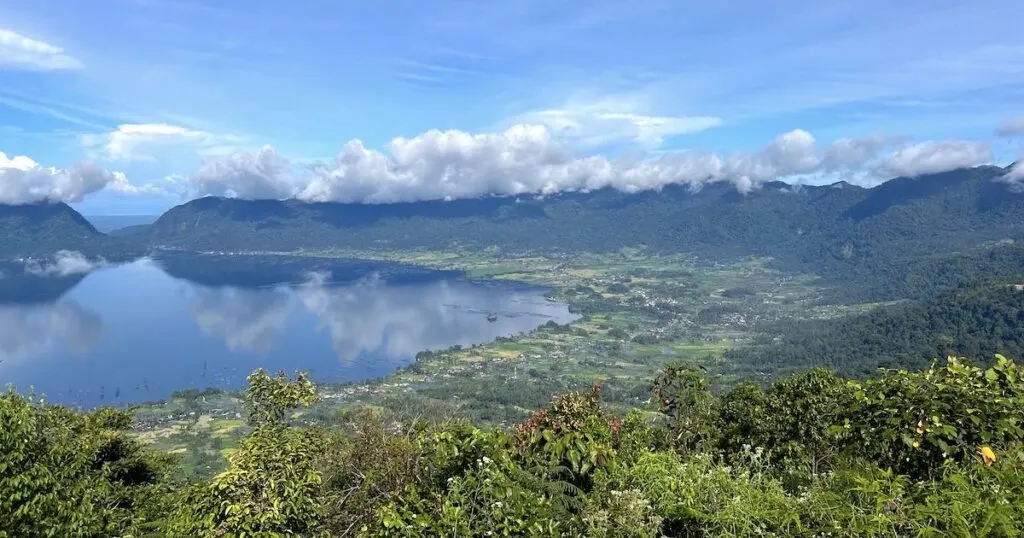
Altitude differences
In highland areas such as Berastagi, temperatures are more moderate. They’re likely to range between 20 and 28 °C depending upon the weather and the altitude.
Backpacking Sumatra: How Many Days Do You Need in Sumatra?
Sumatra is a large island. At its widest point, it measures 435 kilometres.
From north to south, it is 1,790 kilometres long.
Therefore, you need time to travel the entirety of Sumatra.
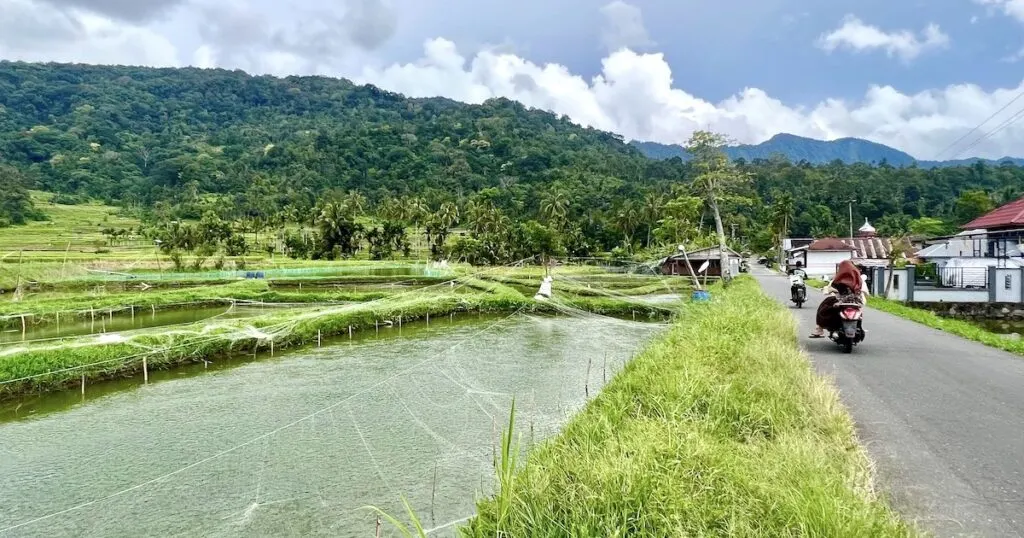
To travel north and west Sumatra, you should allow at least two weeks to one month.
Travelling between north and west Sumatra requires an overnight bus or a flight from Medan to Padang.
You can travel just north or west Sumatra – not both – in as little as 10 days.
Ideally, to travel Sumatra in its entirety, including the north, west and south Sumatra, you need at least three weeks to one month.
Backpacking Sumatra: How to Get to Sumatra
The best way to get to Sumatra will depend upon your starting destination.
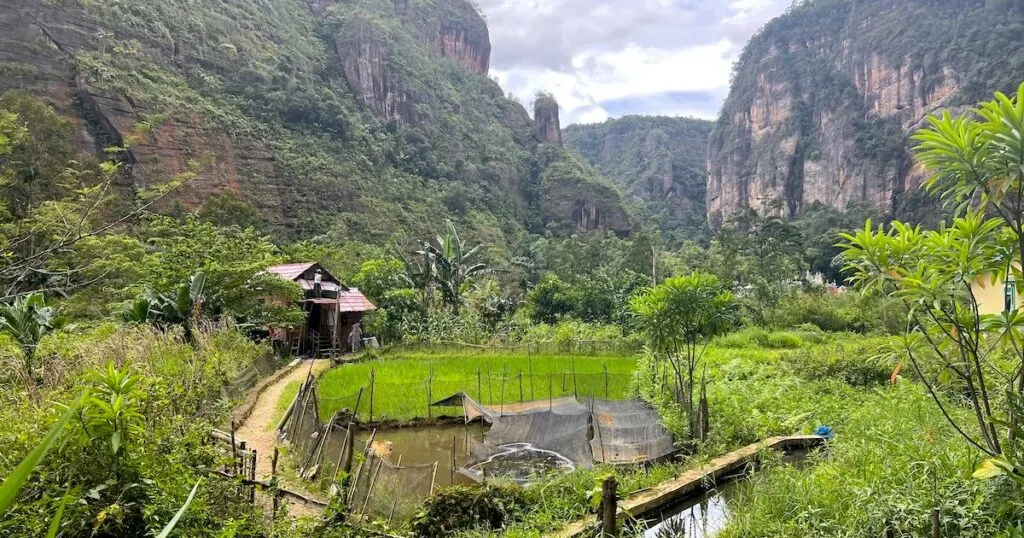
The best and cheapest way to get to Sumatra is to fly into Medan.
This large city is in the north of Sumatra and a good place to start your itinerary. It’s also a few hour’s drive from Bukit Lawang, where you can go orangutan trekking.
If you are visiting from Southeast Asia, there are direct flights to Medan from Kuala Lumpur, Bali, Jakarta, Singapore, Bangkok and many destinations in Indonesia.
You can also take the ferry to Sumatra from north Java (Merak to Bakauheni) or Malaysia (Malacca to Damai).
If you take the ferry from Java, you will arrive in south Sumatra. From there, you can explore south Sumatra (the most offbeat part of the island) or immediately take a night bus to west Sumatra.
If you take the ferry from Malacca in Malaysia (like I did), you will arrive in east Sumatra. From there, you can take a night bus to west Sumatra or Medan.
Flights! ✈️
Here’s why I use Skyscanner…
Finding a good deal on flights can often cut the cost of your trip in half. I use the ‘Whole Month‘ and ‘Price Alerts‘ tools to compare prices across different dates.
How to take the ferry from Malacca to Sumatra
You must book the ferry in person at the port in Malacca. Take enough cash in MYR or IDR to buy your visa upon arrival in Sumatra.
The Malaysia-Sumatra ferry is run by the Indomal Fast Ferry company.
You may need to purchase a return ticket or show proof of your onward journey out of Indonesia, although I wasn’t asked for this.
From Damai, you will need to haggle a taxi to take you to the bus station and then book an overnight bus to west Sumatra or north Sumatra. Don’t pay more than 60,000 IDR or you’re being ripped off.
Ask them to stop at an ATM and a tourist SIM card shop enroute.
Backpacking Sumatra: How to Get Around Sumatra
Bus is the primary form of transport around Sumatra.
These include local buses and long-distance buses.
There are also local taxi and Grab (e-hailing) services.
Local travel in Sumatra
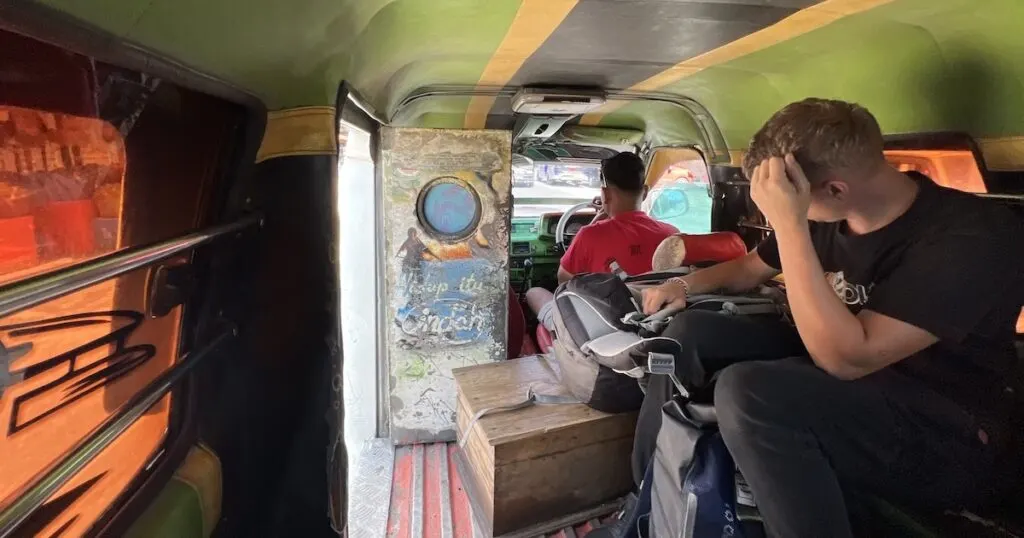
There are three main ways to travel locally in Sumatra (e.g. from one destination to another in the same town or city):
- E-Hailing services (Grab or GoJek): With these apps downloaded to your phone, you can order a car or scooter taxi when connected to the internet. You agree on the fare before ordering the taxi, leaving no surprises.
- Taxis: Taxis are more expensive than a Grab or GoJek. You will need to decide the price with the driver.
- Buses: In some destinations such as Medan, there are also buses available. Unless you want to set yourself the challenge of travelling by public transport, I’d say you are better off sticking to using taxis and e-hailing services.
Long-distance Travel in Sumatra
There are three main forms of long-distance travel in Sumatra.
1. Public buses
Public buses are used by everyone in Sumatra to get from A and B, not just tourists who are backpacking Sumatra.
Public buses range in size and standard. You might get a large overnight bus with air-conditioning or a small, old mini bus where the windows don’t open.
In general, local buses are cheap and fairly easy to arrange.
Every time I wanted to take a public bus for a journey under five or six hours, I just turned up at the bus station on the same day and waited less than half an hour. I usually paid the driver in cash on the bus.
For overnight journeys, you need to book your ticket at the bus station at least one day in advance. These journeys sell out.
The ‘executive’ buses are popular because they feature luxuries like air conditioning, reclining seats, extra legroom, blankets, and toilets.
Mini-buses are very small. Because I’m quite short, I didn’t mind the lack of legroom. However, tall people will struggle to sit in a minivan for extended periods and might be better off hiring a private driver in Medan.
2. Tourist Buses
A tourist bus is a car or minivan shared between a group of tourists who do or do not know each other.
The tourist bus operator usually takes separate bookings at a fixed price and then groups tourists travelling in the same direction together.
If you’ve travelled in Mexico or Cuba, you’ll realise that they are similar to the collective taxi concept.
I only found tourist buses in north Sumatra.
Actually, after travelling west Sumatra by local buses alone, I was incredibly frustrated because tourist buses are more expensive than local buses (over double the price).
Plus, they take longer because they take a less direct route to drop tourists at their different homestays.
3. Flying in Sumatra
There are airports in Medan (north Sumatra), Padang (west Sumatra),Palembang (south Sumatra), Gunungsitoli (Nias Island) and various other locations in Sumatra.
However, the flights are infrequent and expensive compared to bus travel. You can expect to pay £50 – £100 for a flight between Medan and Padang.
Meanwhile, a comfortable ‘executive’ overnight bus with air conditioning costs under £15 for the same route
Flying is only helpful if you want to skip any overnight bus journeys between north and west Sumatra.
The Best Route for Backpacking Sumatra
I’m going to begin by listing the best destinations in north and west Sumatra and why you should consider visiting them.
Then, I’m going to provide the best routes for the amount of time you’re visiting Sumatra – one month, three weeks, two weeks, 10 days, or one week.
Backpacking North Sumatra Itinerary
1. Medan
Best for: Historic sites and culture
Time needed: 1-2 days
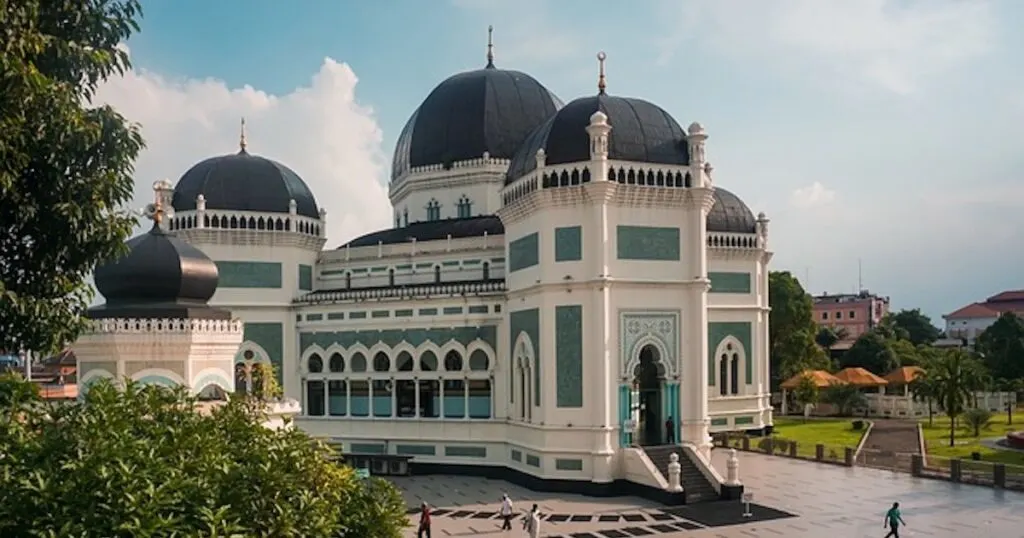
Medan is the biggest city in Sumatra.
A brief visit is all you need when you’re backpacking Sumatra unless you’re really interested in the history and culture of the city.
Some of the most interesting attractions in Medan are the Great Mosque of Medan, which has Islamic and European influences, and Maimun Palace, the royal house of the Sultanate of Deli.
For dinner, hunt down Indonesian street food on Jalan Selat Panjang, which is famous for its food stalls.
There are also several temples you can explore in the city.
If you want to explore Medan with the help of a guide, then you can book a Medan city tour.
Where to Stay in Medan
2. Bukit Lawang
Best for: Orangutan jungle trekking
Time needed: 2 – 10 days (depending upon the length of your jungle trek)
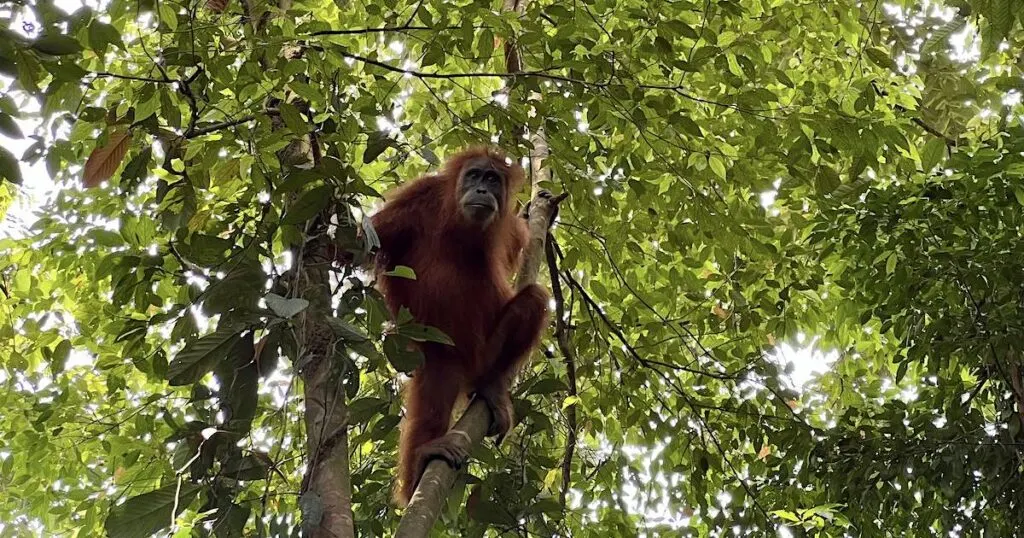
Bukit Lawang is the reason many people visit Sumatra. The small village is home to the largest Sumatran orangutan sanctuary in Sumatra.
The sanctuary is located in the Gunung Leuser National Park, which is a UNESCO World Heritage Site.
Jungle trekking to see orangutans can last anywhere between one day and 10 weeks, with overnight camping increasing your chances of seeing orangutans, along with other wildlife such as Thomas’s langur and gibbons.
However, most people do a two- or three-day trek. I was short on time after exploring west Sumatra, so I took this excellent orangutan trekking day trip from Medan and saw seven orangutans, plus gibbons and Thomas’s langur monkeys.
If I were to go again, I’d take this ethical three-day orangutan trek from Bukit Lawang instead. The longer the trek, the greater your chances are of seeing wildlife.
As I explain in my guide to the best things to do in Bukit Lawang, you can also go tubing on the river or take part in farm tours, a becak tour, or visiting the Bat Cave.
Where to Stay in Bukit Lawang
For a more detailed look at where to stay, check out my guide to the best Bukit Lawang hotels.
3. Berastagi
Best for: Volcano trekking
Time needed: 2 days
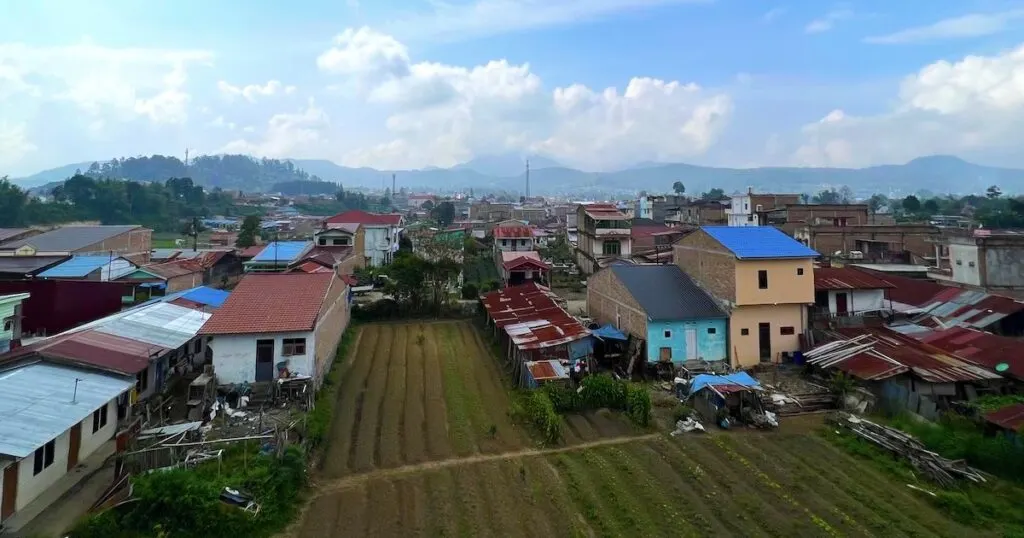
Berastagi is a town in the Karo highlands between Medan and Lake Toba.
It is best known as a base for climbing Mount Sibayak, a 2181-metre active stratovolcano with hot springs, sulphur fumes, and a cone-shaped crater.
Unlike the town’s other volcano, Mount Sinabung, the last eruption of Sibayak was in 1881 and it has been deemed safe to climb.
Sadly, I was too sick to take the Mount Sibayak sunrise hike I had planned (I relaxed and recovered at Nachelle Homestay instead), but hopefully, you can make it for me.
The town’s name literally means ‘city of rice’. It has a thriving farm industry, so visiting the market is another must.
You can also visit the remains of local villages demolished by Mount Sinabung’s eruptions or take a day trip to Sipiso Piso, an impressive 120-metre plunge waterfall.
Where to Stay in Berastagi
4. Lake Toba (Samosir Island)
Best for: Swimming, relaxation, Batak culture, and hiking
Time needed: 3-5 days
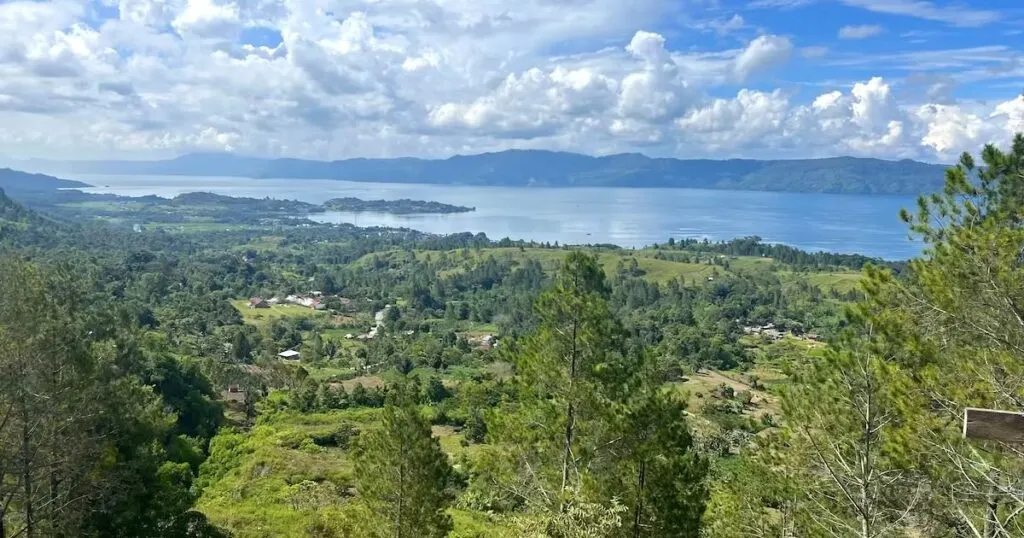
After Bukit Lawang, Lake Toba is the second best-known spot in Sumatra.
It is the largest crater lake in the world. Swimming in the lake is a bucket-list activity for many people – and, after spending five days there, I can confirm it’s well worth it.
Samosir Island, a small island with an ancient Batak culture, is the most popular place to stay at Lake Toba.
You can scooter around the entire island in one or two days, and visit sites to learn about the tribal culture.
The island is the original home of the Bataks.
There’s so much to do and see at Lake Toba, so feel free to open up a new tab with my Lake Toba travel itinerary to help you plan your trip.
Where to Stay at Lake Toba
Check out my detailed guide to the best hotels in Lake Toba for a more detailed breakdown on where to stay!
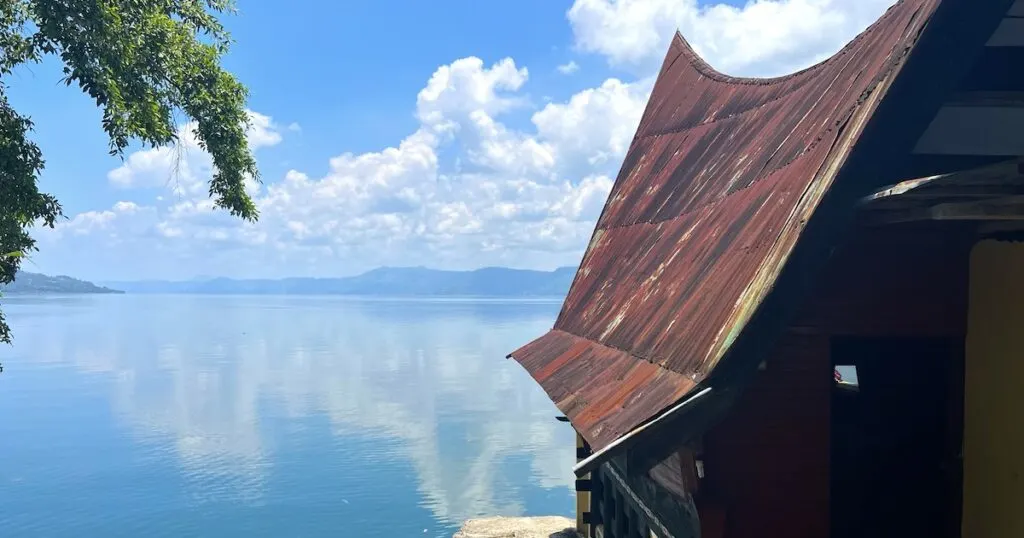
Reggae Guesthouse (£££)
I stayed here!
5. Aceh
Best for: Surfing beaches and diving sites
Time needed: 2-3 days
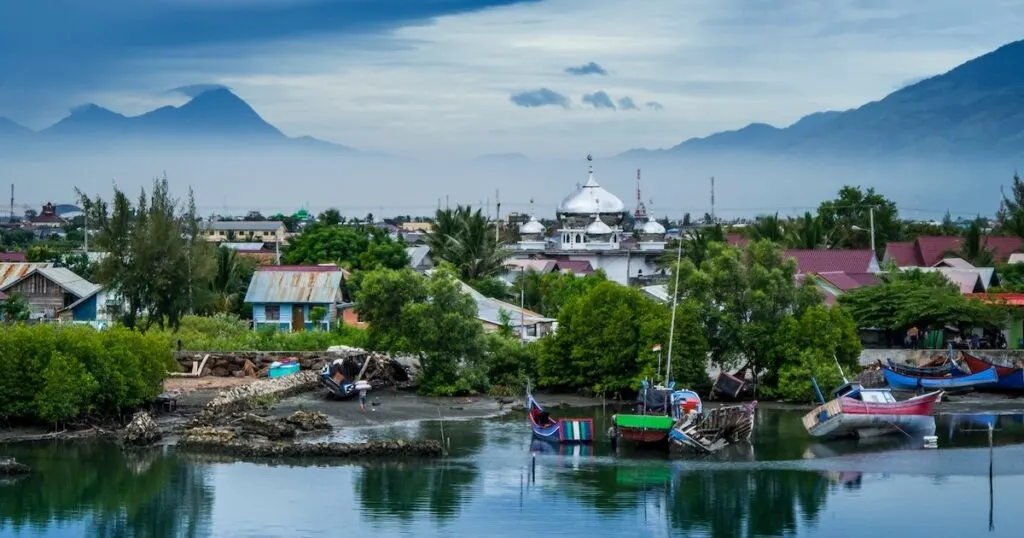
Aceh is a city at the very northern tip of Sumatra.
Sadly, it’s best known for being hit by the 2004 Indian Ocean tsunami (the same tsunami that affected Phuket in Thailand).
However, the city also has good access to beautiful beaches and diving sites, as well as nearby mountains.
Surfers especially like Lhoknga Beach, 15 kilometres away from the city.
There’s a tsunami museum in the city if you’d like to learn more about the 2004 disaster and how the city was rebuilt.
From Aceh, you can take a boat to Pulau Weh, a popular island.
Where to Stay in Aceh
6. Pulau Weh (Sabang)
Best for: Diving, snorkelling, and relaxing
Time needed: 3-5 days
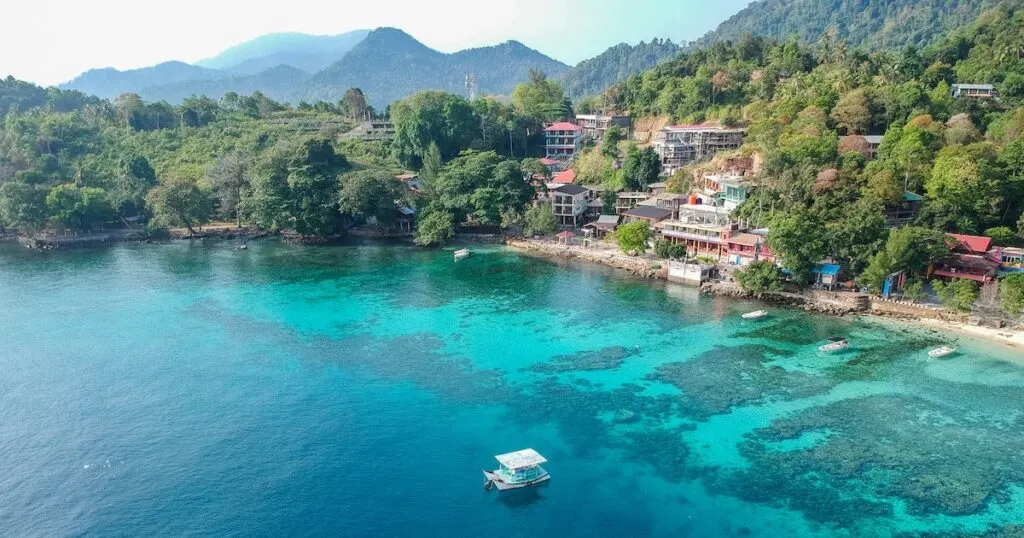
Pulau Weh (or Sabang as it’s also known) is a small island accessible by a 45-minute fast boat from Aceh.
Diving and snorkelling are the main draws on the island.
Although some of the shallow reefs were damaged by the 2004 tsunami, the deeper reefs are known for being especially beautiful.
The island is mostly covered in palm trees. It also has hot springs, beautiful ‘hidden’ coves, Japanese bunkers and a volcano.
Where to Stay in Pulau Weh (Sabang)
The Best North Sumatra Itinerary
So, now that you’re aware of the main places to visit in north Sumatra, in which order should you visit them?
The following itineraries are the best routes for backpacking north Sumatra.
Aceh and Pulau Weh are the most time-consuming to visit, so you may want to leave these destinations out of your backpacking Sumatra itinerary if you’re short on time.
- Medan – Aceh – Pulau Weh – Aceh – Medan – Bukit Lawang – Berastagi – Lake Toba
- Medan – Bukit Lawang – Berastagi – Lake Toba (if you don’t have time to visit Aceh or Pulau Weh).
Backpacking West Sumatra Itinerary
West Sumatra is not as popular as north Sumatra, mainly because most people visit Sumatra to see orangutans and visit Lake Toba.
However, west Sumatra was my favourite part of the island.
The scenery (especially around Harau Valley and Lake Maninjau) is just incredible. Plus, in west Sumatra, you can visit the Mentawai Islands, which are famous for surfing and their island tribe.
1. Bukittinggi
Best for: Canyon trekking and visiting underground Japanese tunnels
Time needed: 2 days
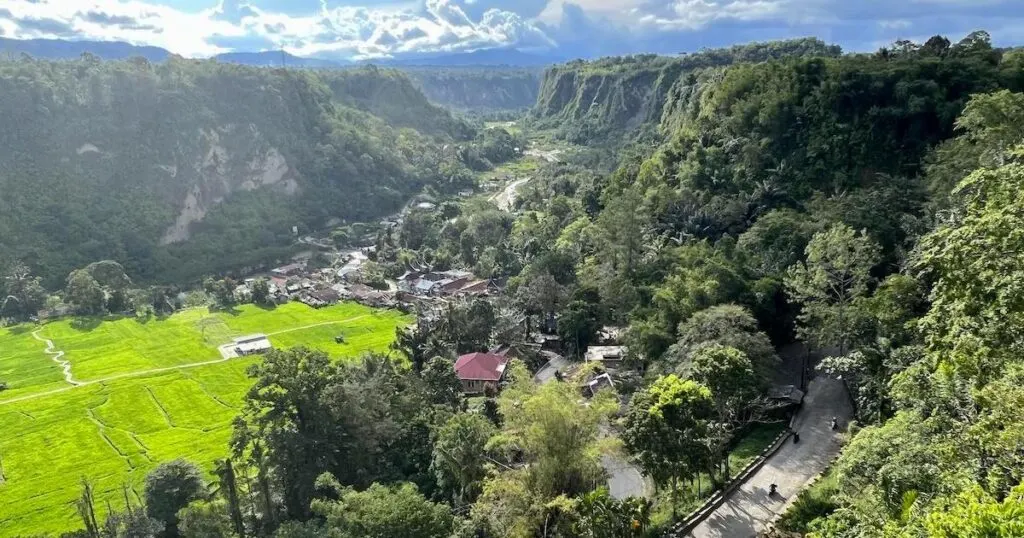
Bukittinggi’s best feature is most definitely Sianok Canyon, a wide canyon bordered by rocky cliffs and featuring the Koto Gadang Great Wall.
The town has views of Mount Merapi and Mount Singgalang, two volcanoes (where unfortunately trekking is currently off-limits).
However, with underground Japanese tunnels from World War II and nearby forests with the largest flower in the world (Rafflesia), Bukittinggi is well worth visiting.
There’s so much to do that I had to write a separate guide to the best things to do in Bukittinggi Sumatra. I couldn’t stop exploring the food markets!
Where to Stay in Bukittinggi
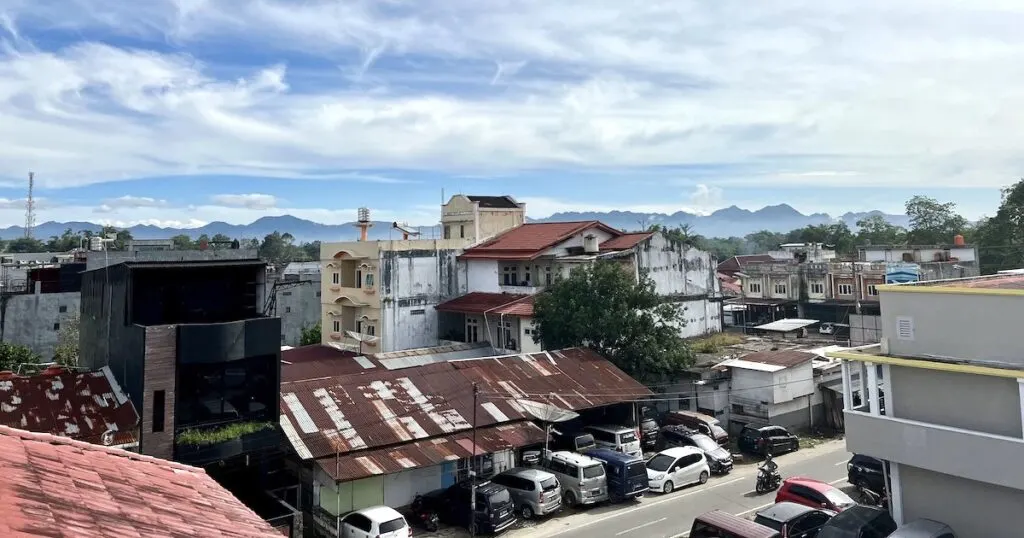
Aur Kuning Hostel (£££)
I stayed here!
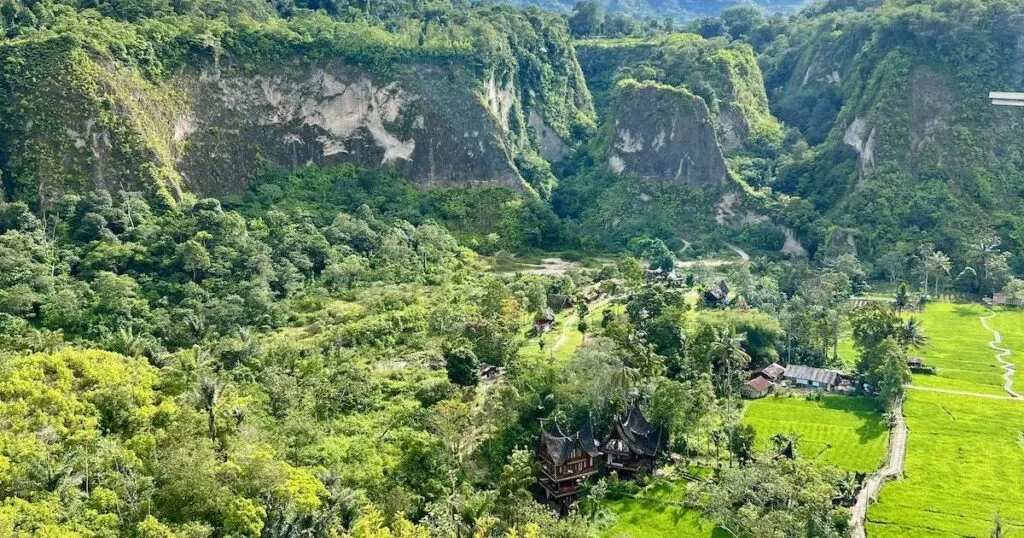
Padi Ecolodge (£££)
Best place for tourists
2. Harau Valley and Payakumbuh
Best for: Hiking trails, rock climbing, and peaceful rice terraces
Time needed: 2-4 days
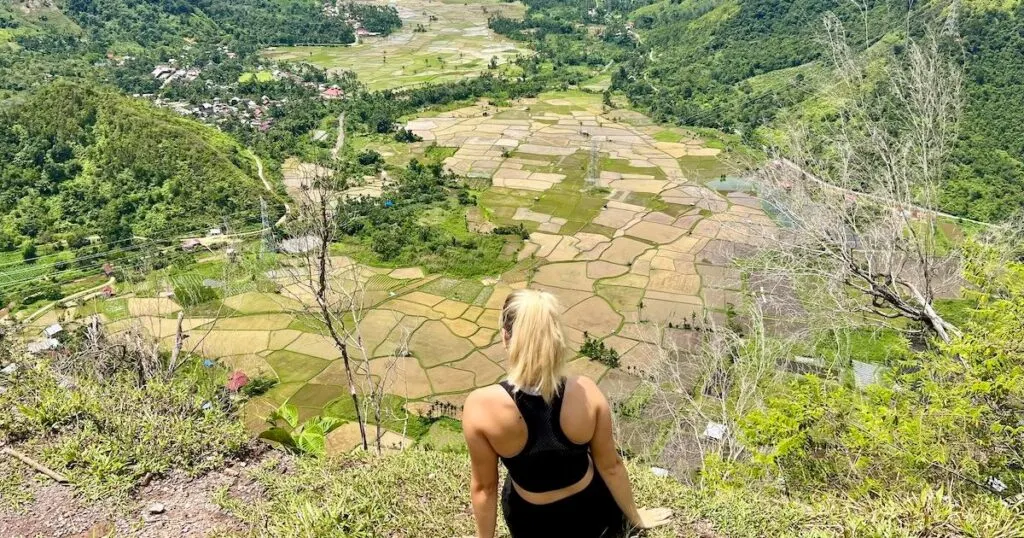
Aptly named the ‘Yosemite of Indonesia’ by the tourism board, Harau Valley is packed with incredible scenery. It has waterfalls, tall cliffs, rice terraces, and farms.
There are hiking trails with views over the rice fields, as well as climbing routes for professional rock climbers.
Take an opelet (the motorised version of a becak) into Payakumbuh, the local town, to explore the markets and local restaurants and to see its traditional Minangkabau architecture.
Harau Valley was my favourite place in all of Sumatra, and there’s very little information online, so I hope my Harau Valley travel guide will help.
Where to Stay in Harau Valley
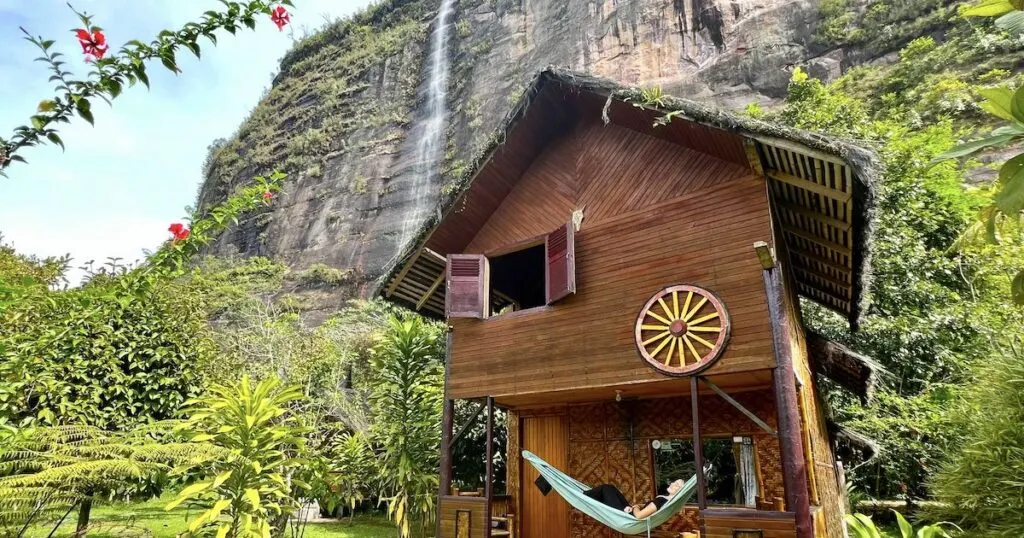
Abdi Homestay (£££)
I stayed here!
To book your stay, you need to contact them directly through the Whatsapp number on Abdi Homestay Instagram.
3. Lake Maninjau
Best for: An offbeat crater lake surrounded by rice terraces and farms
Time needed: 2 days
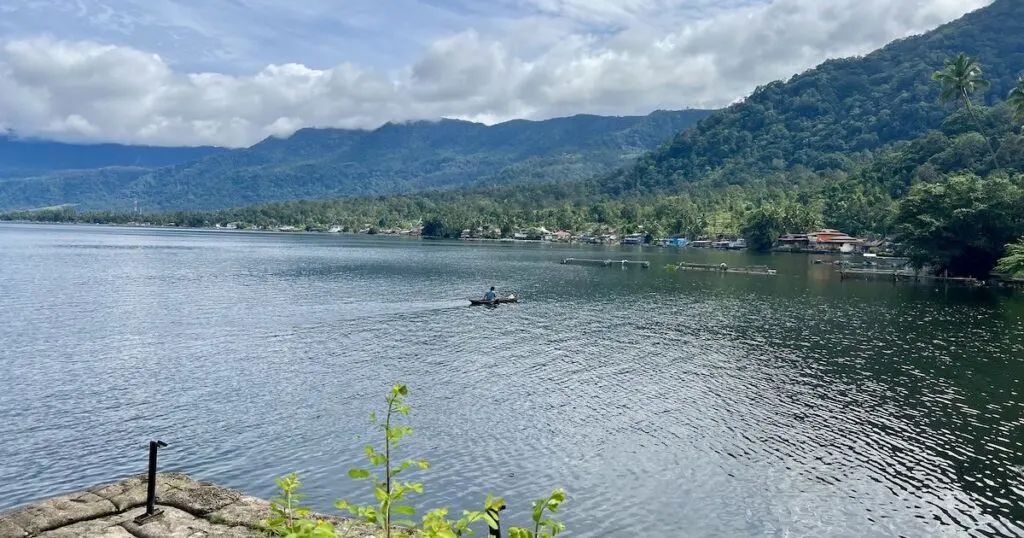
Lake Maninjau is a crater lake surrounded by peaceful rice terraces. It’s only accessible by a road with 44 hairpin turns.
Compared to Lake Toba, the lake is tiny. However, it took me a whole day to cycle the 50-kilometre road around the lake!
I passed by local fishing villages, rice terraces, fish farms, floating mosques, schools, parks, and tiny local shops and restaurants.
You should also make time to visit the unmissable Puncak Lawang viewpoint above the lake.
You can’t swim in the lake due to the fish farms, but I still count it as my second favourite destination in Sumatra. If you want to visit, check out my Maninjau Lake guide.
Where to Stay at Maninjau Lake
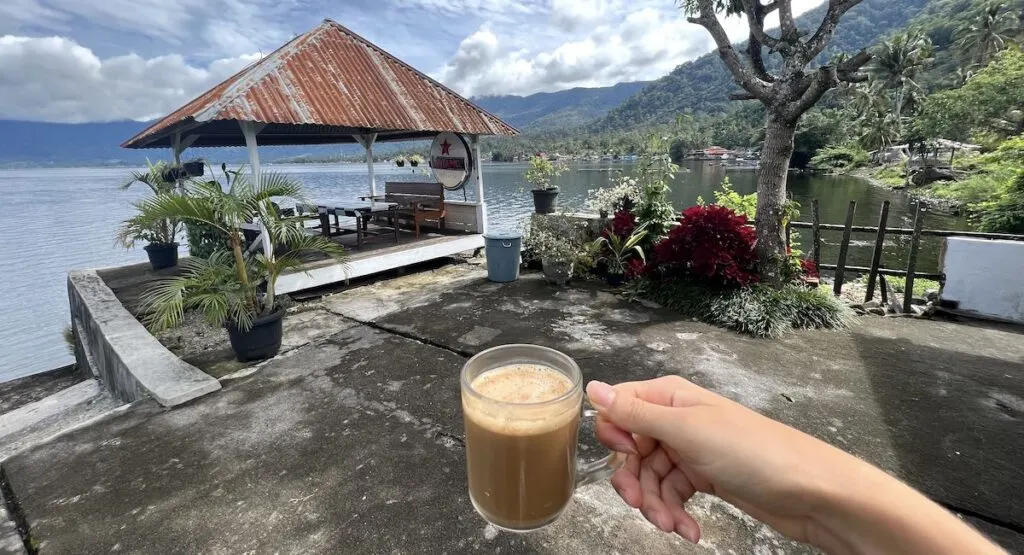
Beach Guesthouse (£££)
I stayed here!
4. Sikabu
Best for: Rice terrace scenery and glamping
Time needed: 1-2 days
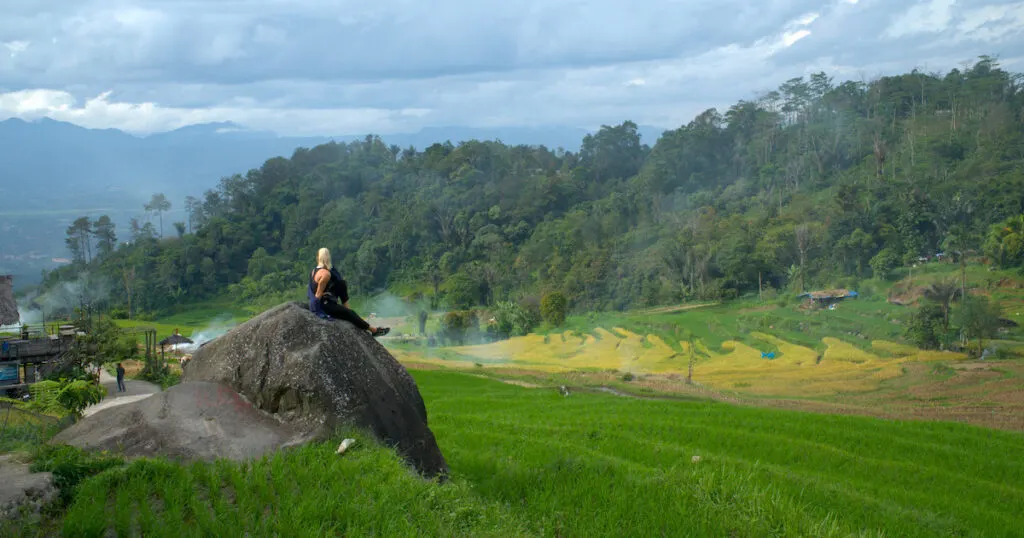
Sikabu is still flying under the radar for international tourists. Right now, it is mainly popular with Indonesian tourists.
If I hadn’t taken a day trip there from Harau Valley, I’d never have known it existed.
The tiers of rice terraces are occupied by grazing water buffalos and have views over Payakumbuh and Mount Sago.
There are waterfalls and a biking park nearby, but the main attractions are the coffee shops overlooking the rice terraces and the ridiculously beautiful Sikabu Glamping.
5. Padang
Best for: Food, culture, beaches, and the ferry to the Mentawai Islands
Time needed: 1-2 days

Padang is the departure point for the Mentawai Islands, but it’s also a good place for foodies.
Padang cuisine is famous worldwide, especially nasi Padang (Padang rice), which is a style of dining where restaurants stack up to 50 different plates and diners pick and choose their dishes.
Padang has a Chinatown, a colonial Dutch old quarter, a museum, and a famous sunset beach called Pantai Air Manis.
Fast ferries to the Mentawai Islands run several times per week, usually on Tuesday, Thursday and Saturday, and take up to six or seven hours.
Where to Stay in Padang
6. Mentawai Islands (including Siberut Island)
Best for: Surfing, tribal culture and relaxation
Time needed: 3 – 7 days
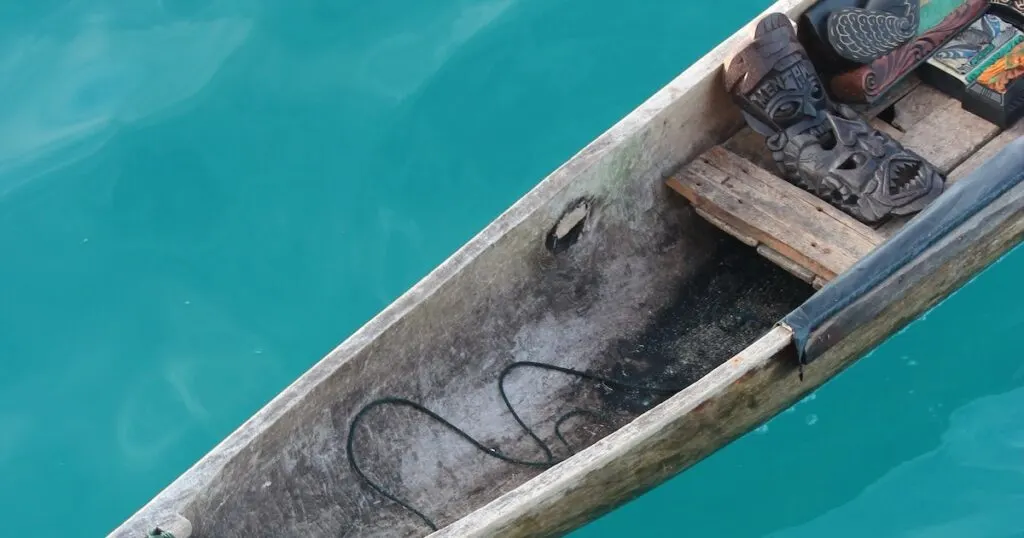
The Mentawai Islands are considered one of the best surfing destinations in Indonesia. The island’s surf camps are very popular.
If you’re not a surfer, don’t worry, because the island has silky-soft beaches and great snorkelling spots too.
Semi-nomadic tribes inhabit the islands, and responsible tourism agencies can arrange visits to the tribes to learn about their culture.
You can book the five-day Mentawai tribe tour on Viator, so they can do all of the intricate planning for you.
There are lots of logistics involved in getting to the Mentawai Islands, which is why I didn’t have time to visit myself.
7. Nias Island
Best for: A remote island with surfing beaches and caves
Time needed: 3-4 days
Nias Island is another barely-explored island off the west coast of Sumatra.
The island is made up of palm, cocoa and rubber trees. It has small villages, waterfalls, and caves, as well as pristine beaches and corals for snorkelling.
Surfing is also popular at Nias Island.
One small museum divulges the local island culture, which is distinct from the mainland; many of the elders don’t speak any Indonesian, because the island has its own language.
The Best West Sumatra Itinerary
The best west Sumatra itinerary will ideally visit all of the following destinations, but if you’re short on time, your best bet is to miss out on visiting Nias Island or the Mentawai Islands.
The Mentawai Islands, however, are a must-visit for many people and require at least 3-5 days.
If visiting Mentawai is a non-negotiable for you, you may have to skip destinations like Lake Maninjau and Harau Valley.
- Bukittinggi – Harau Valley/Payakumbuh – Sikabu – Lake Maninjau – Padang – Mentawai Islands – Nias Island (full itinerary arriving by bus from north Sumatra).
- Padang – Mentawai Islands – Bukittinggi – Harau Valley/Payakumbuh – Sikabu – Lake Maninjau – Nias Island (full itinerary arriving by a flight in Padang).
- Bukittinggi – Harau Valley/Payakumbuh – Sikabu – Lake Maninjau (without the islands).
Sumatra Itinerary: 3 Weeks
Three weeks of backpacking in Sumatra gives you plenty of time to visit both north and west Sumatra.
You may have to skip Aceh in the very north of Sumatra and/or some of the islands in the west.
- Medan: 1 day
- Bukit Lawang: 3 days (includes two days of orangutan trekking and one half-day of travel)
- Berastagi: 2 days (includes one day of volcano trekking and one half-day of travel)
- Lake Toba: 3 days (including one travel day). Take an overnight bus to Bukittinggi in West Sumatra.
- Bukittinggi: 2 days (including one short journey)
- Harau Valley/Payakumbuh: 2 days
- Travel day: 1 day. Take a taxi to Payakumbuh, a bus to Bukittinggi, and a second bus to Lake Maninjau.
- Lake Maninjau: 2 days
- Padang: 1 day
- Mentawai Islands: 4 days
- Travel day: Take a flight to Medan to return home (book in advance) or take an overnight bus to west or south Sumatra for the ferry terminals onwards to Malaysia or Java.
Sumatra Itinerary: 2 Weeks
The following two-week Sumatra itinerary covers north and south Sumatra.
- Medan: 1 day
- Bukit Lawang: 3 days
- Berastagi: 2 days
- Lake Toba: 2 days. Take an overnight bus to Bukittinggi in West Sumatra.
- Bukittinggi: 2 days
- Harau Valley/Payakumbuh: 2 days (including a possible afternoon visit to Sikabu)
- Padang: 1 day (mostly a travel day)
- Travel day: Take a flight to Medan to return home (book in advance, or take an overnight bus to west or south Sumatra for the ferry terminals onwards to Malaysia or Java.
The following two-week itinerary focuses entirely on north Sumatra:
- Medan: 1 day. Take an overnight bus to Aceh.
- Aceh: 1 day
- Pulau Weh (Sabang): 2 days
- Aceh: 1 day. Take an overnight bus to Medan.
- Bukit Lawang: 3 days
- Berastagi: 2 days
- Lake Toba: 3 days. Take an overnight bus to Bukittinggi in West Sumatra.
- Travel day: 1 day. Take a bus from Lake Toba to Medan.
The following two-week itinerary focuses entirely on west Sumatra and the Mentawai Islands:
- Travel day: 1 day. Take an overnight bus to Bukittinggi from Medan or another city.
- Bukittinggi: 2 days
- Harau Valley/Payakumbuh: 2 days
- Sikabu: 1 day
- Lake Maninjau: 2 days
- Padang: 1 day (including a half-day of travel)
- Mentawai Islands: 4 days
- Travel day: Take a flight to Medan to return home (book in advance), or take an overnight bus to west or south Sumatra for the ferry terminals onwards to Malaysia or Java.
Sumatra Itinerary: 10 Days
If you only have 10 days (or less) in Sumatra, it’s going to be difficult to visit west Sumatra unless you take a flight immediately from Medan to Padang.
If you do this, you won’t have any time to visit north Sumatra.
A 10-day itinerary for north Sumatra:
- Medan: 1 day
- Bukit Lawang: 3 days
- Berastagi: 2 days
- Lake Toba: 3 days. Take an overnight bus to Bukittinggi in West Sumatra.
- Travel day: 1 day. Take a bus from Lake Toba to Medan.
A 10-day itinerary for west Sumatra (beginning in Padang):
- Padang: 1 day
- Mentawai Islands: 4 days
- Bukittinggi: 2 days (including a half-day bus)
- Harau Valley/Payakumbuh and a day trip to Sikabu: 2 days
- Travel day: 1 day. Take a flight to Medan to return home (book in advance), or take an overnight bus to west or south Sumatra for the ferry terminals onwards to Malaysia or Java.
Sumatra Itinerary: One Week
If you only have one week to go backpacking in Sumatra, I’d recommend staying close to Medan.
You’ll probably only have time to go orangutan trekking and to visit either Berastagi or Lake Toba.
The following itineraries are possible.
Lake Toba and Bukit Lawang:
- Bukit Lawang: 3 days (including two days of orangutan trekking)
- Lake Toba: 3 days
- Travel day: 1 day. Take a bus from Lake Toba to Medan.
Berastagi and Bukit Lawang:
- Medan: 1 day
- Bukit Lawang: 3 days (including two days of orangutan trekking)
- Berastagi: 2 days
- Travel day: 1 day. Take a bus from Lake Toba to Medan.
What to Pack and Wear When Backpacking Sumatra
Sumatra is a predominantly Muslim country, so dressing conservatively is essential on the majority of the island.
Some places are less conservative, such as Lake Toba, a Christian enclave, and the Mentawai Islands.

There are also mosquitos and the weather to think of, among other things, which is why I’ve created a full guide to what to wear in Sumatra (including a full packing list) to help you prepare for your trip.
Cost of Backpacking Sumatra
Travelling in Sumatra is mostly inexpensive, unless you take multi-day tours.
Typically, Indonesian main meals cost me between 10,000 IDR and 40,000 IDR, which is equivalent to £0.50 to £2.10 (€0.6 to €2.50).
For basic accommodation in a double room with air conditioning and either a private or shared bathroom, I typically paid between 100k – 1220k IDR (£5.20 – £11.50 or €6 to €13.50).
If you’re sharing the room between two people, you can cut the price of the room in half.
Accommodation is slightly more expensive in north Sumatra than in West Sumatra.
Transport is the most expensive part of travelling Sumatra.
Overnight buses from Bukittinggi (west Sumatra) to Medan (north Sumatra) cost 225k IDR for an ‘economy’ bus without air conditioning. It’s 260k IDR for a bus with a toilet and air conditioning.
Expect to pay 335k IDR for an ‘executive bus’ with extra legroom, air conditioning and a toilet.
Short-haul bus journeys via local bus are less expensive and usually cost between 20K and 50K for a one- to six-hour journey.
Tours and activities in Sumatra will be another bigger expense when backpacking Sumatra.
For example, a one-day trekking tour in Bukit Lawang costs around 900-1000k IDR (approximately £50) and a two-day tour costs around 1500k IDR (approximately £80).
Backpacking Sumatra Tips
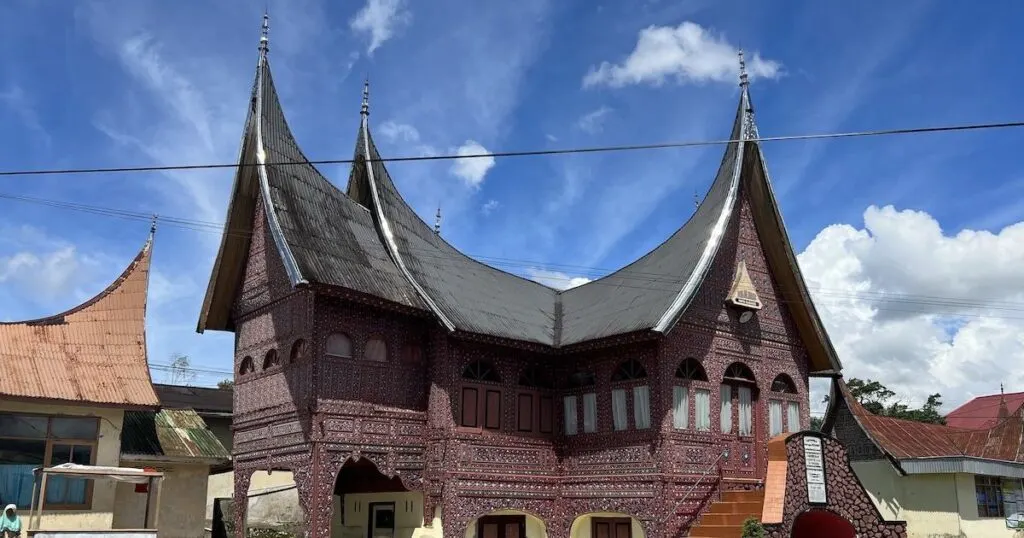
- Read the text carefully when booking your accommodation. I travelled with a friend, and because we were male and female, we weren’t permitted to share a room in some hotels in west Sumatra.
- Bring plenty of mosquito repellent. Mosquito repellent suitable for the skin is hard to find in Sumatra, even in supermarkets. Mosquitos in Sumatra carry malaria, among other diseases. If you do run out, ask for the ‘Autan’ brand mosquito repellant.
- Make time for travel delays due to weather and traffic.
- Monitor news outlets for warnings of natural disasters.
- Take a friend. While you can solo travel in Sumatra, it’s harder to meet other travellers because there are fewer tourists. In North Sumatra, you’re more likely to meet solo travellers.
- Dress conservatively in Muslim areas (most of the island)
WiFi and Internet in Sumatra

Wi-Fi in mainland Sumatra is mostly stable and fast. To access 4G, you cannot rely on a local SIM card.
Unlike in other parts of Indonesia, foreigners can not use a local SIM card because they are only compatible with phones purchased in Sumatra. Believe me, I tried.
You must buy a tourist SIM card. These are sold in very few places: the only places I can vouch for are Medan Airport and one small shop in Damai (near the ferry port).
I believe they are mostly sold around the entrance points into Sumatra, so buy one as soon as possible upon your arrival.
You can buy an eSIM for Indonesia. I did this after missing my chance in Damai. However, the eSIM was very unreliable. Some days, it worked. Others, it didn’t (for no apparent reason).
My friend and I bought the same eSIM. When we were in the same location, sometimes one of us would have 4G and the other wouldn’t.
Places to Visit After Sumatra
1. Malacca, Malaysia
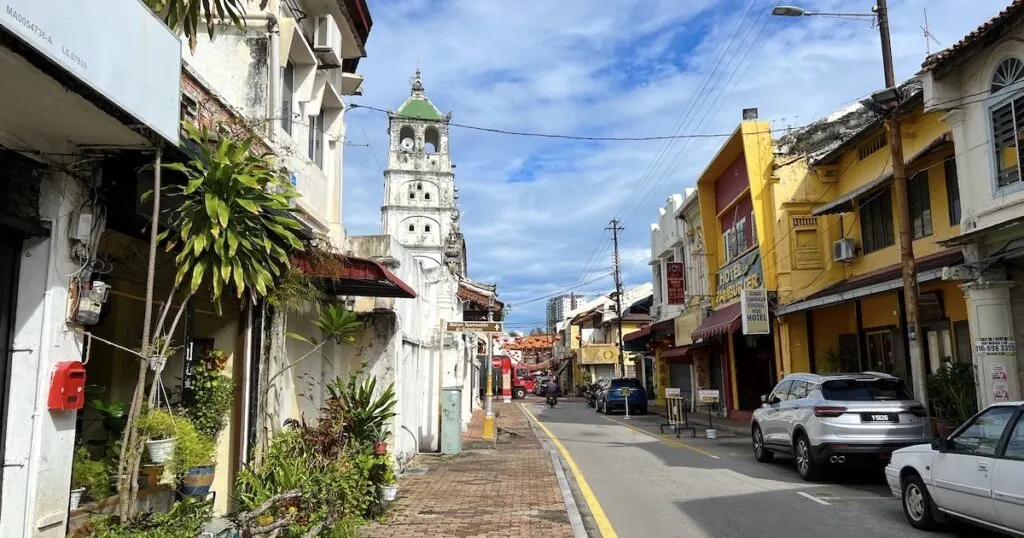
Who could turn down a chance to visit a UNESCO World Heritage Site?
Malacca (also Melaka) in Malaysia is accessible by a direct ferry from Sumatra via the port in Damai. The weekend Jonker Street night market is very famous.
It’s also packed to the brim with historical sites, including a 17th-century Chinese temple, an 18th-century Javanese-style mosque, and a church.
River cruises run along the riverfront, which is lined with bars and coffee shops, as well as fascinating street art.
From Malacca, you can visit Kuala Lumpur and continue your travels through Malaysia – to places like Tioman Island, Penang, Ipoh, or the Cameron Highlands, for instance.
2. Java, Indonesia
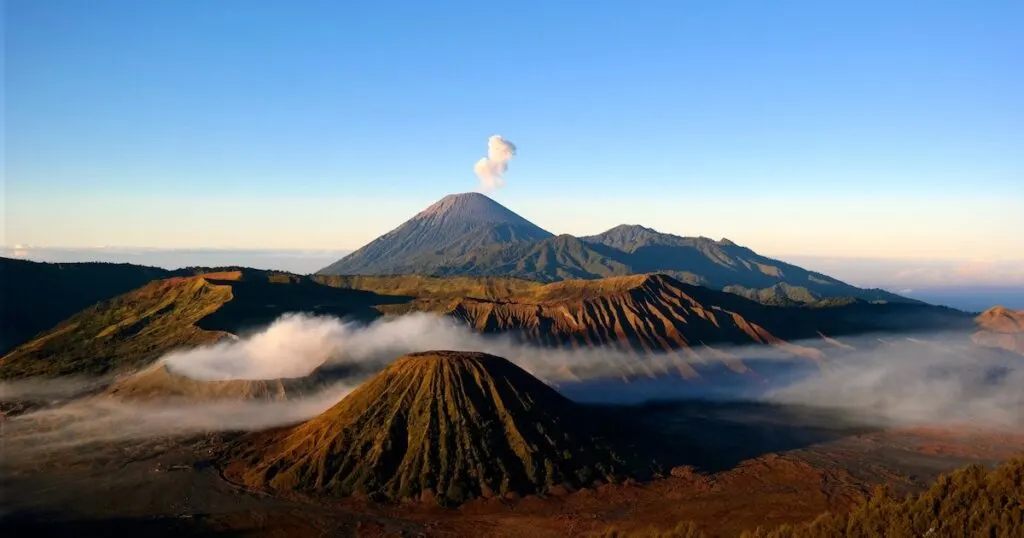
Java is an Indonesian island immediately south of Sumatra, accessible by a flight or ferry, and a great choice after backpacking Sumatra.
Like Sumatra, it’s speckled with volcanoes. It’s home to the capital of Indonesia, Jakarta, but the most famous things on the tourist map are Mount Bromo, crater volcano, and Mount Ijen, which spits out what has become known as ‘blue fire’ on the south of the island (close to west Bali).
Yogyakarta’s temples are also world-renowned.
3. Singapore
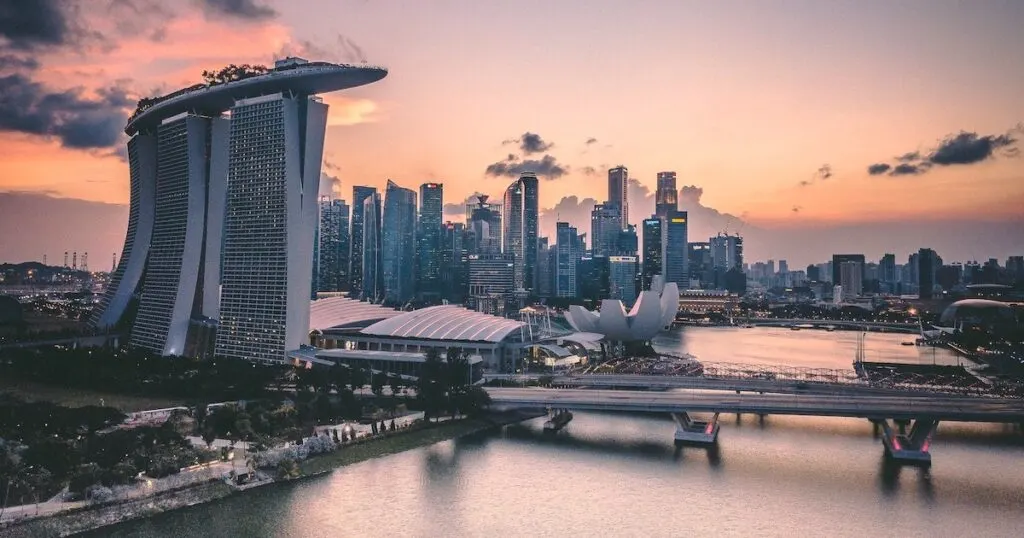
Singapore, one of the cleanest cities in Asia, is a short flight away. Its skyline is one of the most famous in the world, especially the Marina Bay Sands and Gardens By The Bay.
Dine on local food in the hawker markets and soak up the green spaces, such as the botanical gardens. There are museums, a theme park, temples, and a reel of other things to see.
FAQ
While Sumatra does not have a backpacking trail, it is a great destination for backpackers who want authentic local experiences and enjoy hiking, natural scenery, and wildlife. The island has volcanoes, crater lakes, valleys, and canyons, as well as Sumatran orangutans and other indigenous species.
The most beautiful island in Sumatra is widely regarded to be the Mentawai Islands, a group of islands covered in palm trees and remote beaches. Surf camps are popular on the Mentawai Islands.
The crime rate in Sumatra is very low. In 2020, there were 150 crimes recorded per 100,000 people.
The average temperature in Sumatra is 32 °C. The temperature is consistently hot and humid all year round.
The southernmost point of Sumatra is a short ferry journey from the north of Java. If you’re travelling from Medan to Jakarta, however, the flight covers over 1,800 kilometres.
Sumatra is a developing country with rural and urban poverty. Wealth is distributed unevenly, with very few benefitting from the island’s oil fields, coalfields, gold and silver.
Sumatra is located in the Ring of Fire, so it is considered to be prone to natural disasters such as volcano eruptions, earthquakes and tsunamis. The crime late is low. Overall, Sumatra is safe as long as you know the proper precautions to take in the event of a natural disaster.
A flight from Denpasar in Bali to Medan in Sumatra takes approximately three to four hours non-stop.
Most people consider Sumatra to have better scenery and wildlife than Java. However, Java is appreciated for its culture and temples. There are orangutans in Sumatra, but not in Java.

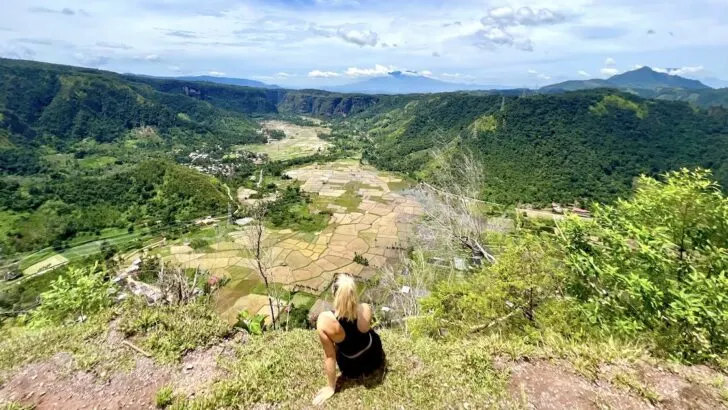












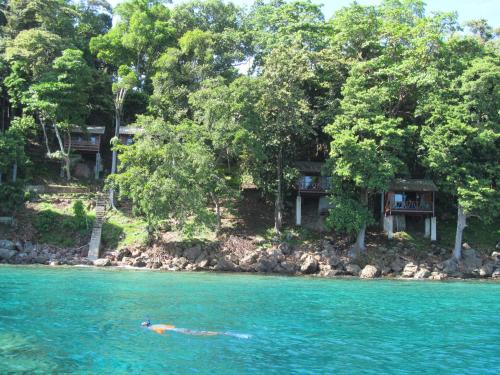

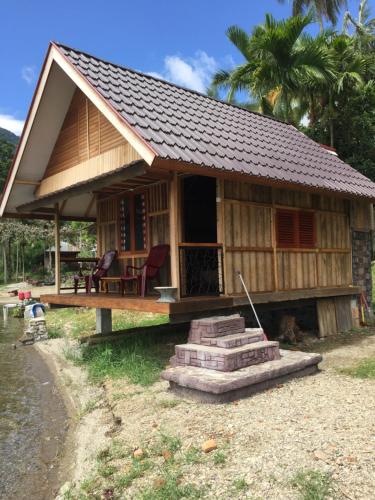


view nepal treks
Friday 21st of February 2025
Your post is amazing and really brings Sumatra to life! It would be helpful to add info on transportation between cities and time estimates for activities. A note on cultural sensitivity, especially with the Mentawai tribe, would also be great.
Colin
Tuesday 11th of February 2025
Enjoyed your guide, it fits well with the thoughts and plans I have, although you have made me reconsider my dates due to to Ramadan. You mention no bars or clubs, but a nice cold beer after a days hiking would be good. Do shops/restaurants there sell beer ? I saw a lot of Orangutangs when I was in Malaysian Borneo, so I wasn't planning on going to Bukit Lawang. My planned route is a couple of nights in Medan, then on to Berestagi for a night or two, next a couple of nights in Tuk Tuk on lake Toba. Then I thought I'd head south and west, because as you say it looks beautiful and is less travelled :). I'd break the journey with a night in padang simenpuan, before continuing to Bukittingi for a couple of nights and finally a stay in Padang, from where I would fly to KL and then back to Bangkok. I spend most of my time in Thailand these days in the north east region so I have a Thai sim. I guess this should work on Sumatra and will be cheap so long as I add Indonesia to my package. Thank you for all the great details and insights into Sumatra.
Ana Paraschiv
Monday 17th of February 2025
@Colin, Hi, When do you plan your journey to Sumatra? I’m landing on 20.02. In Medan. Maybe you want to travel together.
Best regards Ana
Trevor
Tuesday 19th of November 2024
This is a great guide! Only thing I would add to it is some more information about the interior route of Gunung Lesseur park. Ketambe is a more authentic place to see truly wild orangutan (as opposed to ones that were released or their children in Bukit Lawang), but it takes a full day to get to it. Takengon has a lovely lake and is renowned for its coffee made there.
Its the road less traveled for sure, and there's a definite language barrier to overcome, but I highly recommend Medan-Berestagi-Ketambe-Blangkejeren(Kedah)-Takengon-Banda Aceh-Pulau Weh for those who truly want to get off the tourist track and be amongst the locals :) It was my best adventure I've had thus far. Sumatra and Aceh are so beautiful.
Katie
Tuesday 19th of November 2024
@Trevor, Nice suggestions! There are so many spots to visit in Sumatra, but this sounds like a great offbeat adventure.
Lin
Monday 29th of July 2024
Hi Katie, I am enjoying your blog and appreciating it for all the travel tips through Sumatra. I have about 4 weeks to spend flying from Kuala Lumpur and have pencilled out the following itinerary.
Day 1: Travel KL - Medan, overnight Medan Day 2: Travel Medan - Samosir/Lake Toba - 3 nights Day 6: Travel Samosir/LT - Bukit Lawang - 4 nights Day 10: Travel Bukit Lawang - Medan, overnight Medan Day 11: Travel (fly) Medan - Padang, (road transfer) Padang - Bukittingi, overnight Bukittinggi - 3 nights Day 14: Travel Bukittingi - Harau Valley - overnight HV - 4 nights
From here, my itinerary is vague as initially I thought I would go to Nias for a minimum of a week. I am unsure about the connections as it would seem I am needing to travel back to Medan and lose time? Can you advise? Currently, this looks like:
Day 18: Travel (road) HV to Padang - (fly) Padang - Medan, overnight Medan Day 19: Travel (fly) Medan - Gunungsitoli, (road-boat) G - Nias - boat to Asu - overnight Asu 7 nights Days Day 26: Travel (boat) Asu - Nias, (road) Nias - Gunungsitoli, overnight Gunungsitoli Day 27: Travel (fly) Gunungsitoli - Medan, (fly) Medan - KL
Is this do-able? If not, perhaps go to Mentawei Islands instead? I am not sure. I would love to hear your comments.
Thank you so much and best wishes for your travels too! Lin
Katie
Tuesday 19th of November 2024
@Lin, I would take advantage of being near to the Mentawai Islands instead. In general, it's best to assume that you will experience some travel delays at some point during your trip (for whatever reason - weather, road conditions or transport delays) so leaving some wriggle room in your itinerary is a good idea.
Niraj Patel
Monday 25th of March 2024
Hi Katie Amazing blog! Thank you so much
I wanted to spend 3 weeks backpacking in Sumatra with my wife and 14 and 12 year old. Due to their summer vacation we can only go in June.
Do you think travel during the "burning season" is bad enough to change our travel destination? Thank you
Katie
Tuesday 19th of November 2024
@Niraj Patel, I would say it depends on where you want to go and what you want to see. For example, if you're only going to Medan/Bukit Lawang for orangutan trekking, I would still go. However, if you're planning lots of hiking and beach time, I would avoid burning season entirely.